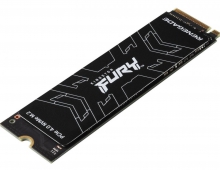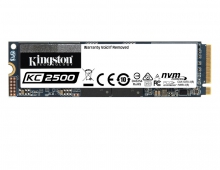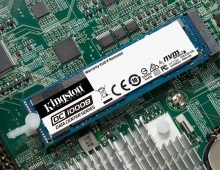Kingston DC400 960GB SSD review
9. Summary
The DC400 SSD is armed with features tailored to the needs of the enterprise environment - end-to-end data path protection, hardware encryption, SmartECC, high endurance, SmartRefresh and firmware-controlled power loss management. Its enterprise firmware improves latency and helps DC400 deliver consistently low data access times under steady state workloads.
Datacenter use of SSD’s cannot be a one-size-fits-all approach - some applications are more read intensive and others more write intensive. Kingston’s DC400 SSD 960GB offers user-adjustable over-provisioning to improve random IOPs performance.
Depending on the application class and capacity of the SSD, an increased reserve capacity of NAND flash memory can be allocated as an over-provisioned (OP) spare capacity. The OP capacity is hidden from user and operating system access and can be utilized as a temporary write buffer for higher sustained performance and as a replacement of defective flash memory cells during the life-expectancy of the SSD to enhance the reliability and endurance of the SSD. The DC400 960GB SSD we tested allows for user-adjustable over-provisioning, meaning that you can manually set the amount NAND that will be allocated to the overprovisioned area, in order to get better performance and better endurance. This can be easily done through the Kingston Storage Manager (KSM), is a Windows-based graphical user interface. Since the manually configure the overprovisioning on the SSD lets you fit the goals of the application and/or workload.
We ran all our tests with the standard 7% OP . But for increased performance, a larger over-provisioned area on an SSD will primarily improve write IOPS performance and lower application latency. As a general guideline, the largest improvements in performance are obtained with an OP area between 7% and 28%. Configuring OP beyond 28% will result in higher endurance for the SSD but the performance benefits may begin to diminish at this point.
Kingston is also offering a performance-optimized model of the DC400 (400/800GB). This model offers greater IOPs for faster application performance and reduced storage latencies that result in faster user response times. But if your needs include read-intensive workloads, a factory-tuned, read-optimized model offers read-intensive performance and more affordable per gigabyte. It’s available in 1800GB capacity and by special order only.
The quoted sequential read /write figures for the DC400 960GB SSD were confirmed, along with the quoted random read and write figures. The drive was fast in 4K random read tests, and remained fast in its steady state. It showed its strengths in 4K random reads with both compressible and incompressible data and in QD1~QD32, as well as in 4K64 reads.
In the write tests, the DC400 960GB returned adequate performance a 4K compressible writes in QD1 / QD32, but it could be a bit faster in
incompressible 4K, 4K64 random writes.
We would also like to see higher results in the demanding IOmeter benchmark, where we bombard the drive with an escalating number of concurrent IO requests, simulating the sort of demanding multi-user environments.
The DC 400 960GB retails for $388, which is a very competitive price.






















